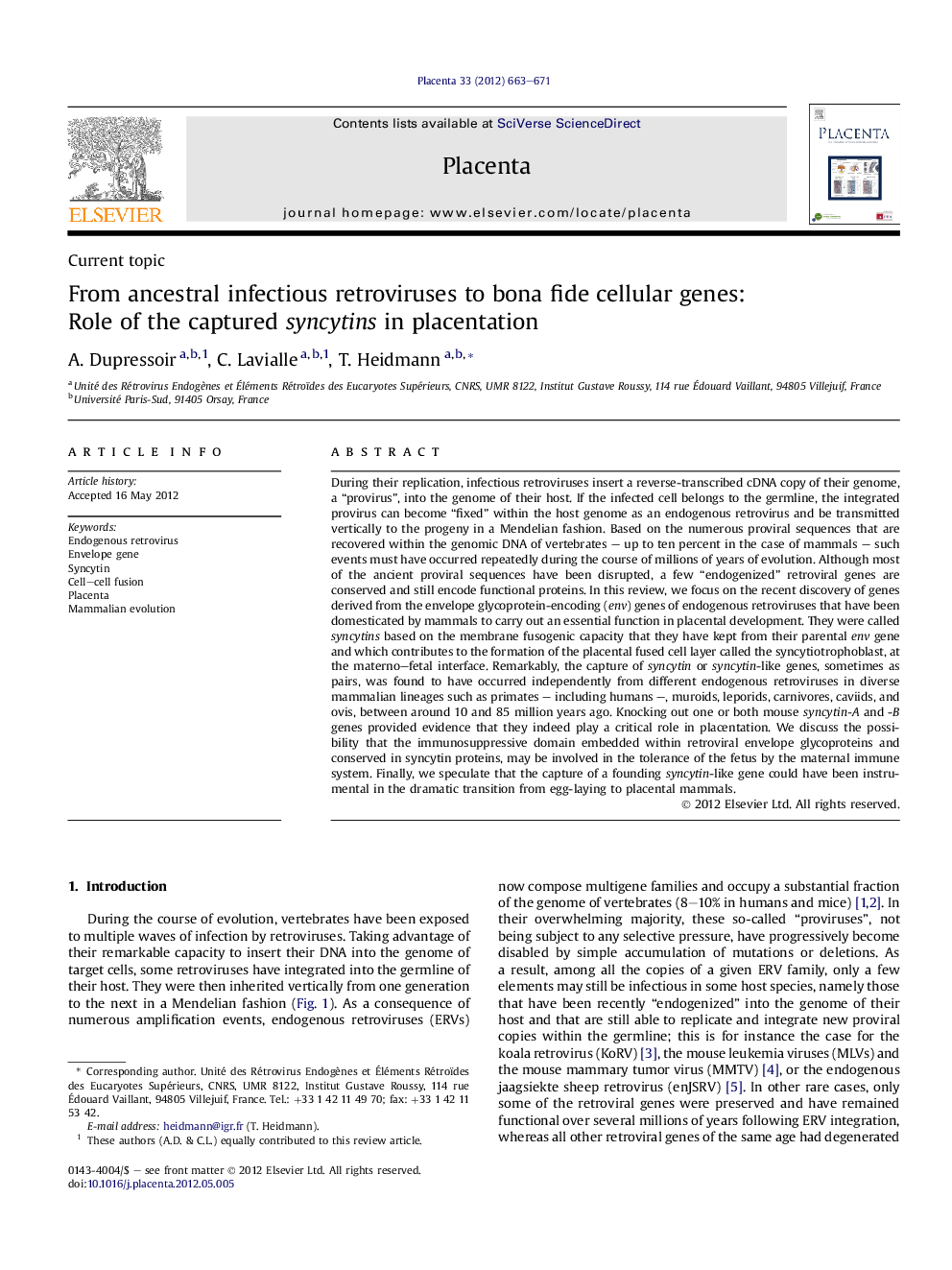| کد مقاله | کد نشریه | سال انتشار | مقاله انگلیسی | نسخه تمام متن |
|---|---|---|---|---|
| 5895357 | 1154457 | 2012 | 9 صفحه PDF | دانلود رایگان |
عنوان انگلیسی مقاله ISI
From ancestral infectious retroviruses to bona fide cellular genes: Role of the captured syncytins in placentation
دانلود مقاله + سفارش ترجمه
دانلود مقاله ISI انگلیسی
رایگان برای ایرانیان
کلمات کلیدی
موضوعات مرتبط
علوم زیستی و بیوفناوری
بیوشیمی، ژنتیک و زیست شناسی مولکولی
زیست شناسی تکاملی
پیش نمایش صفحه اول مقاله

چکیده انگلیسی
During their replication, infectious retroviruses insert a reverse-transcribed cDNA copy of their genome, a “provirus”, into the genome of their host. If the infected cell belongs to the germline, the integrated provirus can become “fixed” within the host genome as an endogenous retrovirus and be transmitted vertically to the progeny in a Mendelian fashion. Based on the numerous proviral sequences that are recovered within the genomic DNA of vertebrates - up to ten percent in the case of mammals - such events must have occurred repeatedly during the course of millions of years of evolution. Although most of the ancient proviral sequences have been disrupted, a few “endogenized” retroviral genes are conserved and still encode functional proteins. In this review, we focus on the recent discovery of genes derived from the envelope glycoprotein-encoding (env) genes of endogenous retroviruses that have been domesticated by mammals to carry out an essential function in placental development. They were called syncytins based on the membrane fusogenic capacity that they have kept from their parental env gene and which contributes to the formation of the placental fused cell layer called the syncytiotrophoblast, at the materno-fetal interface. Remarkably, the capture of syncytin or syncytin-like genes, sometimes as pairs, was found to have occurred independently from different endogenous retroviruses in diverse mammalian lineages such as primates - including humans -, muroids, leporids, carnivores, caviids, and ovis, between around 10 and 85 million years ago. Knocking out one or both mouse syncytin-A and -B genes provided evidence that they indeed play a critical role in placentation. We discuss the possibility that the immunosuppressive domain embedded within retroviral envelope glycoproteins and conserved in syncytin proteins, may be involved in the tolerance of the fetus by the maternal immune system. Finally, we speculate that the capture of a founding syncytin-like gene could have been instrumental in the dramatic transition from egg-laying to placental mammals.
ناشر
Database: Elsevier - ScienceDirect (ساینس دایرکت)
Journal: Placenta - Volume 33, Issue 9, September 2012, Pages 663-671
Journal: Placenta - Volume 33, Issue 9, September 2012, Pages 663-671
نویسندگان
A. Dupressoir, C. Lavialle, T. Heidmann,